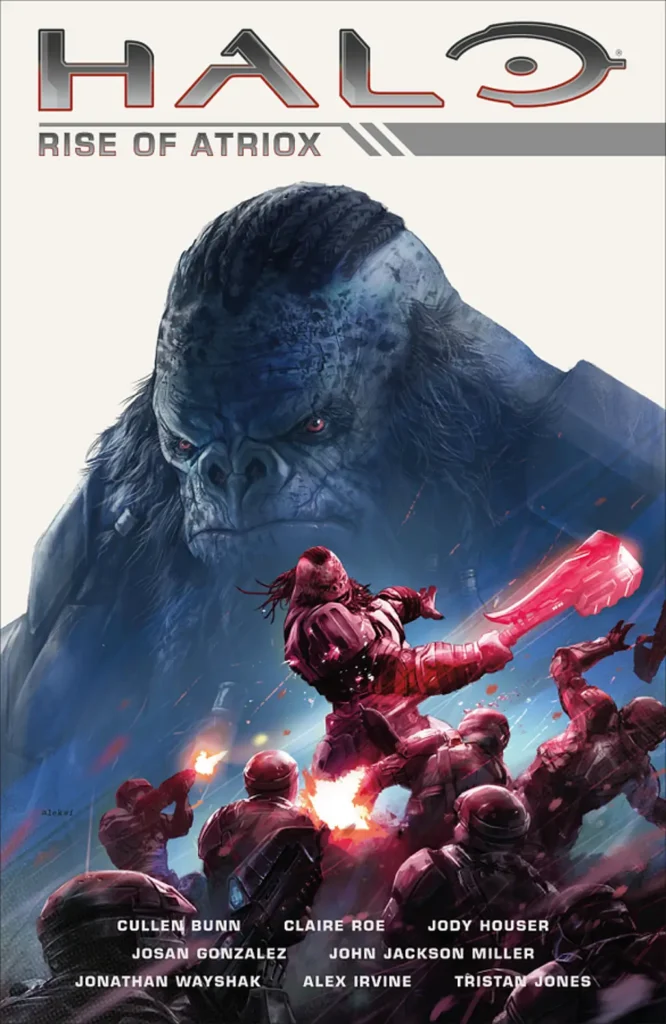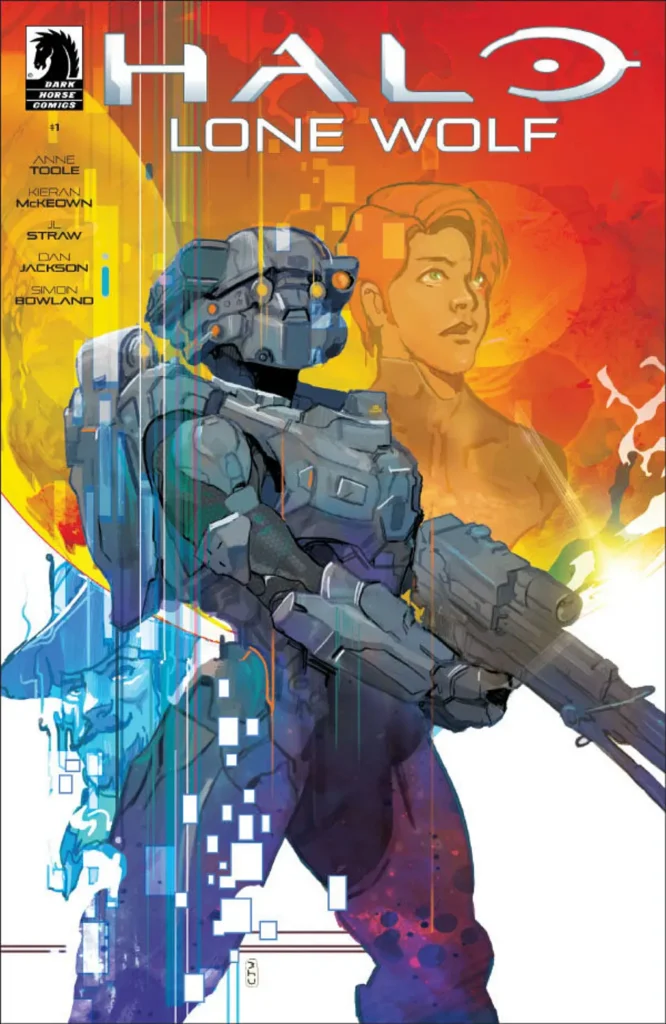If you’re looking for the Halo comics reading order, let’s rewind to where it all started: 2001. Halo: Combat Evolved didn’t just launch a shooter; it detonated a universe. Spartans, Covenant, rings the size of planets… and a lore rabbit hole so deep, we’re still falling.
Here’s the thing: Halo’s games give you the campaign. But the comics? They’re the secret cutscenes, the “what happened while you weren’t looking” moments, and the gritty angles the mainline skips. They turn side characters into legends, villains into icons, and yes, Atriox gets his spotlight long before he smashes his way into Halo Wars 2.
This guide is your map: the Halo comics reading order, where to dive in, and how these stories elevate Halo from “just a game” to a universe that practically dares you to keep up.
Do Halo Comics Complement the Games or Stand Alone?
Short answer? Both.
Halo comics don’t just piggyback on the games; they weave into them, filling the gaps the main campaigns can’t always show.
Take Rise of Atriox. Before you even meet him in Halo Wars 2, the comics show you exactly how this brute went from Covenant cannon fodder to the Banished’s hammer-swinging warlord. Or Tales from Slipspace, which sneaks you behind enemy lines with Blue Team while Master Chief is off rewriting galactic history elsewhere.
But here’s the twist: some Halo comics do stand on their own. Collateral Damage works even if you’ve never touched a controller; it’s pure Spartan action with enough context baked in to hook newcomers.
Play the games for the spectacle. Read the comics for the secrets. Together, they’re Halo in 4K. Skip the comics, and you’re basically watching the trailer without the movie.
Halo Comics Reading Order (Chronological)
1. Early Era (Marvel/Bungie Era: 2006–2009)
- Halo: Uprising #1–4 (2007–2009) – Bridges Halo 2 and Halo 3 with Chief in action.
Feels like campaign DLC you never played, pure adrenaline. - Halo: Helljumper #1–5 (2009) – ODST soldiers in the trenches.
These guys swear more than Spartans breathe, and it’s glorious. - Halo: Blood Line #1–5 (2009–2010) – Spartan Black’s gritty survival tale.
Think Band of Brothers, but with energy swords.
2. Fall of Reach Trilogy (2010–2011)
Adaptation of Eric Nylund’s iconic novel:
- Bootcamp #1–4 (2010) – Young John-117’s Spartan training.
- Covenant #1–4 (2010) – The early war and Covenant’s rise.
- Invasion #1–4 (2011) – Full-scale conflict leading into Halo: CE.
This trilogy is Spartan history 101, mandatory for lore junkies.
3. 343 Era Expansion (2013–2016)
- Halo: Initiation #1–3 (2013) – Sarah Palmer’s Spartan-IV origin.
- Halo: Escalation #1–24 (2013–2015) – Political drama + Spartan ops post-Halo 4.
- Halo: Tales from Slipspace (128 pages, 2016) – 7 anthology stories including Atriox’s Hunting Party.
Lore tapas. Some hits, some filler, all fascinating.
4. Standalone Highlights (2017–2019)

- Halo: Rise of Atriox #1–5 (2017–2018) – Atriox’s brutal origin, pre-Halo Wars 2.
- Halo: Collateral Damage #1–3 (2018) – Classic Chief mission between Halo: CE beats.
- Halo: Lone Wolf #1–4 (2019) – Linda-058 sniper precision showcase. Check out the preview of Lone Wolf #4 at Dark Horse Comics.

5. Modern Tie-ins & Extras (2020–Present)
- Halo: Recruit (2020) – Newcomer-friendly intro one-shot.
- Waypoint Digital Shorts (Ongoing) – Mini-comics tied to events and game promos.
Some are single-issue snacks, others full-course lore meals. If you’re marathoning, block out a weekend and maybe an extra pot of coffee.
Suggested Entry Points for New Readers
Halo’s comics look like a war chest full of gear, some essentials you need to survive, and some shiny extras you grab once you’re hooked. Here’s how to load out.
Think of it as building your Spartan kit: start with the basics, then upgrade when you’re ready to flex. Here is a different Halo comics reading order by reader type:
For Game-First Fans (Essential Lore)
If you’ve played the games and want to see the “deleted scenes” of Halo’s universe:
- Halo: Rise of Atriox #1–5 (2017–2018) – Atriox’s savage prequel (Halo Wars 2 tie-in).
- Halo: Escalation #1–24 (2013–2015) – Direct bridge between Halo 4 and Halo 5.
- Halo: Collateral Damage #1–3 (2018) – Classic Chief mission between Halo: CE.
It’s like extended cut Halo, familiar faces, more chaos, and bigger stakes.
For Lore Junkies (Deep Dive Essentials)
Ready for the full Spartan boot camp?
- Halo: Tales from Slipspace (2016) – Anthology of seven stories (Blue Team’s “On the Brink” is unmissable).
- Halo: Lone Wolf #1–4 (2019) – Linda-058 sniper perfection.
- Halo: Fall of Reach Trilogy #1–12 (2010–2011) – Bootcamp, Covenant, Invasion. Spartan origin canon.
- Halo: Blood Line #1–5 (2009–2010) – Spartan Black survival ops.
This is the hardcore kit, raw lore, deep cuts, and the stories that make Halo feel massive.
For Absolute Beginners
Want something standalone before wading into deep lore? Start here:
- Halo: Recruit (2020) – A perfect one-shot intro.
- Halo: Uprising #1–4 (2007–2009) – Early Master Chief action bridging Halo 2 to 3.
- Halo: Helljumper #1–5 (2009) – ODST chaos with zero homework required.
Short, sharp, and clean, like your first BR headshot.
If you’re completely new? Go Rise of Atriox → Collateral Damage → Tales from Slipspace. That’s your starter pack. Add Fall of Reach and Escalation once you’re in deep and ready to drown in lore.
Should You Play First or Read First?
Here’s the eternal question: do you dive into the comics before touching a Halo game, or vice versa?
Play first.
The games give you the spine of the story, Master Chief, the Covenant War, the Halo rings. Without that foundation, the comics can feel like you walked into a movie halfway through.
But here’s the twist: the comics enhance everything. They fill in what the games leave out, turning “epic battles” into “oh, now I get why Atriox terrifies people” moments. Just follow the Halo comics reading order above.
Halo Comics Are the Universe’s Hidden Payload
Here’s the thing: Halo comics aren’t optional, they’re the intel packet that makes the whole battlefield click. You get Atriox’s ruthless rise (Rise of Atriox), Blue Team’s quiet heroics (Tales from Slipspace), and deep dives like Fall of Reach that turn Spartan myth into grounded reality.
Skip them, and Halo feels big.
Read them, and Halo feels infinite.
These stories don’t just color between the lines; they redraw them. They give you Spartans off-duty, Brutes clawing their way to power, AI unraveling their morality. Some arcs are full-on cinematic (Escalation, Fall of Reach), while others are tight, surgical ops (Lone Wolf, Blood Line). Together, they stitch Halo’s games, novels, and lore into something massive and alive.
This is where Halo stops being a shooter franchise and becomes a living, breathing saga. And once you start? You won’t want out.
So, what’s your drop point?
Starting with Atriox’s brutal origin? Blue Team’s stealth ops? Or Chief’s early days in Collateral Damage? Tell me in the comments, I want to know your first landing zone.
And if you’re ready to assemble your Spartan reading kit, grab the Halo comics on Amazon, load up digital copies, and let’s march straight into lore overload.
Halo Comics Reading Order FAQ
Q1: Do I need to play Halo before reading the comics?
Not strictly. The comics stand on their own, but let’s be real, if you’ve never sprinted across Blood Gulch with a Battle Rifle, you’ll miss half the thrill. Play the games first for context, then let the comics fill in the gaps.
Q2: Are Halo comics canon?
Absolutely. Every Halo comic published by Marvel or Dark Horse under 343 Industries’ watch is canon. This isn’t “what if” fluff, it’s real lore that ties directly into the games and novels.
Q3: Which Halo comic has the best art?
Personal bias? Jonathan Wayshak’s On The Brink (in Tales from Slipspace) is stunning. It’s all grit, texture, and chaos, basically Halo’s vibe on a page. Rise of Atriox comes close for sheer warlord energy.